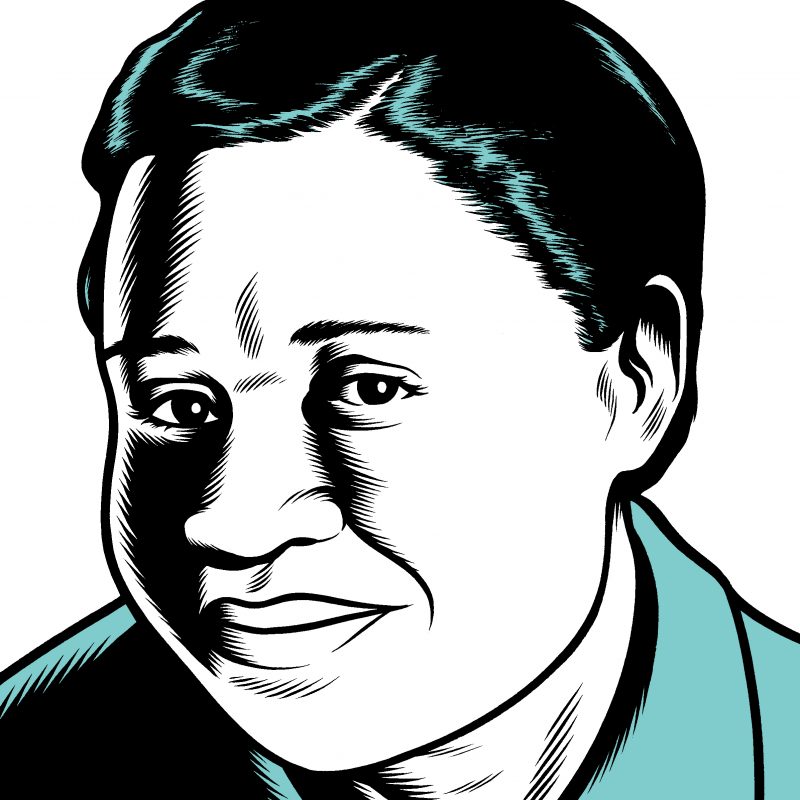Jamaica Kincaid, was born on Antigua, May 25, 1949, as Elaine Potter Richardson. She was educated in colonial British schools, and in 1965, at the age of sixteen, she was sent to Westchester, New York, to work as a servant. She briefly attended Franconia College in New Hampshire, and her interest in photography led her to New York City and the New School for Social Research. Through some fortuitous circumstances she was befriended by New Yorker writer George W. S. Trow, who introduced her to legendary editor William Shawn. Shawn began publishing Kincaid in The New Yorker’s “Talk of the Town” section and encouraged her writing. As Kincaid now recalls, “He always made you think you were the best writer of all. He was an unbelievable suitor.”
In his introduction to Kincaid’s collection of “Talk of the Town” pieces, her good friend and colleague during her tenure at The New Yorker, Ian Frazier writes:
A lot of the exhilaration of those years for me was in seeing who could be the bravest, who could be the coolest. I kept a mental scorecard of brave and cool deeds: I saw New Yorker veterans… come in to the office an hour or two before an issue’s deadline and in one draft turn out “Talk of the Town” stories as elegant and effortless as a Will Rogers roper trick… but to me nobody was braver than Jamaica. She didn’t try to be shocking or “transgressive” or audacious, those imitations of bravery done mainly for effect: her bravery was just the way she was and it came natural and uninterrupted from inside.
Jamaica Kincaid, who adopted that name to distance herself from her Antiguan family’s disapproval of her writing, has published four novels: Annie John (1985), Lucy (1990), The Autobiography of My Mother (1996), and Mr. Potter (2002); a story collection, At the Bottom of the River (1984), which contains the highly regarded “Girl”; a book-length essay about Antigua titled A Small Place (1988), an illustrated children’s story with Eric Fischl called Annie, Gwen, Lilly, Pam and Tulip (1986); a memoir about her youngest sibling who died of AIDS in 1996, My Brother (1997); a collection of writing on gardening My Garden (Book) (1999); and an anthology of her New Yorker “Talk of the Town” pieces, Talk Stories (2001).
During my phone conversation with Kincaid, to arrange our interview, the discussion drifted to our parental responsibilities (she is the mother of Annie Shawn, eighteen, and Harold, fourteen) and how they require us to turn...
You have reached your article limit
Sign up for a digital subscription and continue reading all new issues, plus our entire archives, for just $1.50/month.
Already a subscriber? Sign in





